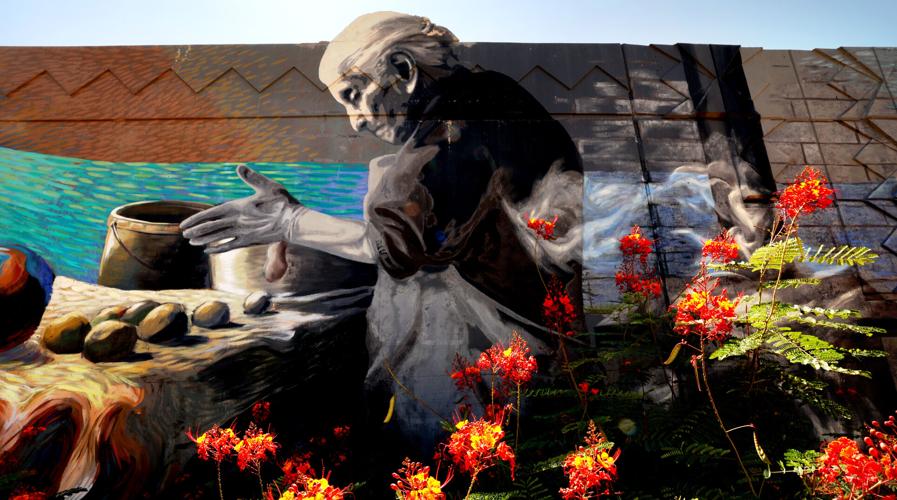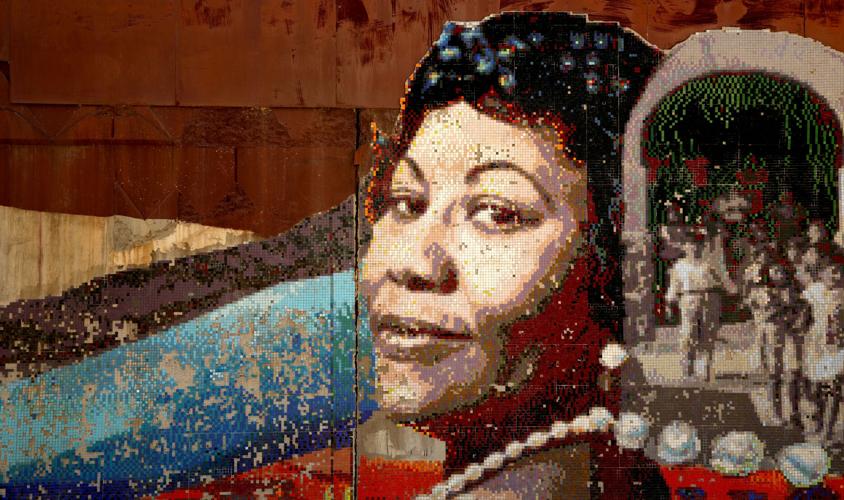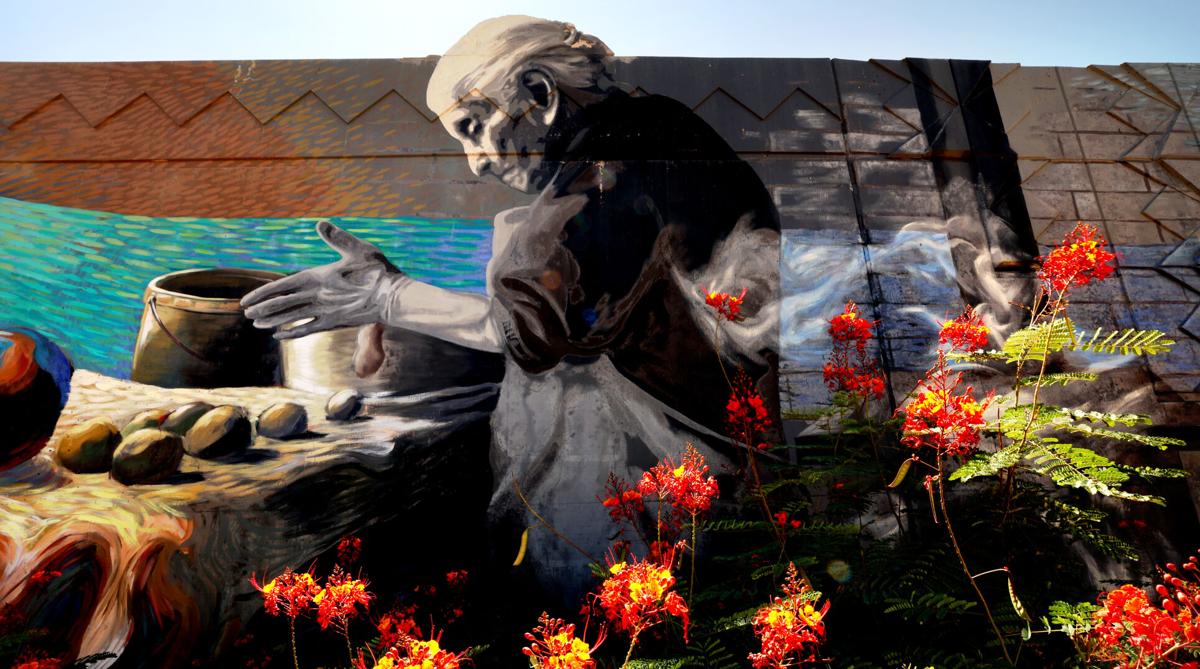A new mural recently unveiled at the Southern Arizona Transportation Museum, showing how the rails spurred Tucson’s growth, is a great addition to the city’s impressive collection of outdoor art.
Most murals celebrate the city’s history, culture and traditions. A few indulge whimsey as in flying whales, a wonderful piece on the southeast corner of Campbell Avenue and Grant Road. It lives on the north side of the long-abandoned Catalina Theater.
Viewing these lovely flying whales is depressingly hampered by another Starbucks store smack dab in front of the colorful creation by artist Joe Pagac. Even Captain Ahab would not have been so rude.
Barrio Anita has my favorite murals. Its west border is Interstate 10, Main Street on the east, Davis Bilingual Elementary Magnet School is south and Speedway on the north.

Traffic on I-10 speeds by the wall featuring Anita’s Song 2 mural in the baseball field at David G. Herrera & Ramon Quiroz Park.
The freeway, built in the early 1960s, split Barrio Anita. The western segment was devoured by I-10. Gene Benton, a longtime administrator for Tucson Unified School District, often told of how his family was left with half a house after the freeway was built.
Around 1900, businessman and stalwart Republican Thomas Hughes developed a property north of downtown and named it McKinley Park, which today is called Barrio Anita because of the Hughes brothers — movers and shakers during the late 19th and early 20th centuries.
Thomas Hughes was a successful businessman. Brother Sam Hughes was a prominent merchant; his name graces a popular central Tucson neighborhood and TUSD school. Lewis Hughes founded the newspaper you are reading and served as territorial governor.
The brothers produced large families, and they enlisted their sister, Ann, to help care for them. She had a home in McKinley Park that was a kid magnet. She gave much and was much loved in return. It was her neighborhood. Her tombstone reads “Aunt Annie” in large letters.
The barrio has three incredible murals: Anita’s Song 1, Anita’s Song 2 and Anita’s Song 3. They are tall and long. Anita’s Song 1 is older and borders on a ball field at the park. Anita’s Song 2 was created with a park setting with benches and trees. Anita’s Song 3 can be found on the northeast corner of St. Mary’s Road and I-10.
The murals depict the people and flora of the barrio. I particularly like a lovely portrait of the late Laura Banks. She was the patroness of Barrio Anita. She was an educator. She and her husband, Jack, owned Jack’s Barbecue on 22nd Street and Craycroft Road. They donated their home to the community when they moved to Texas.

An image of Laura Banks made in mosaic tiles is part of one of the Anita’s Song murals in David G. Herrera & Ramon Quiroz Park.
Anita’s Song 1 was made with beautiful painted tiles, which have since fallen to the ground, a victim of Sonoran weather extremes, creating gaps in the art.
Anita’s Song 2 continues with a celebration of both people and place. The work is painted and has withstood the weather.
There is a portrait of Monsignor Arsenio Carrillo. He was a product of the barrio, a priest with a following. He was pastor at Holy Family and the Cathedral.
One of the murals uses a portrait that appeared in the Star in 1991. It was part of a photo essay by David Sanders, a remarkably creative photographer. The pictures showed 100-year-old Josefa Carrillo making tortillas along with her sister Margarita Olivas, a youthful 99.
Even Anita’s Street Market, which has fallen on hard times, sports a mural on its northside.
There are mural tours, but really all you need to do is drive around. Start on Stone Avenue downtown and head north. The murals express a love of place, this desert and these people. We should be proud.
Joe Pagac works on a mural on the outside of the YMCA of Tucson building on August 28, 2023. Pagac says the 2,600 square-foot mural will be finished by this weekend. The mural highlights different aspects of what the YMCA offers such as basketball, swimming and horseback riding. The mural is funded by the Connie Hillman Family Foundation. Video by: Mamta Popat, Arizona Daily Star







